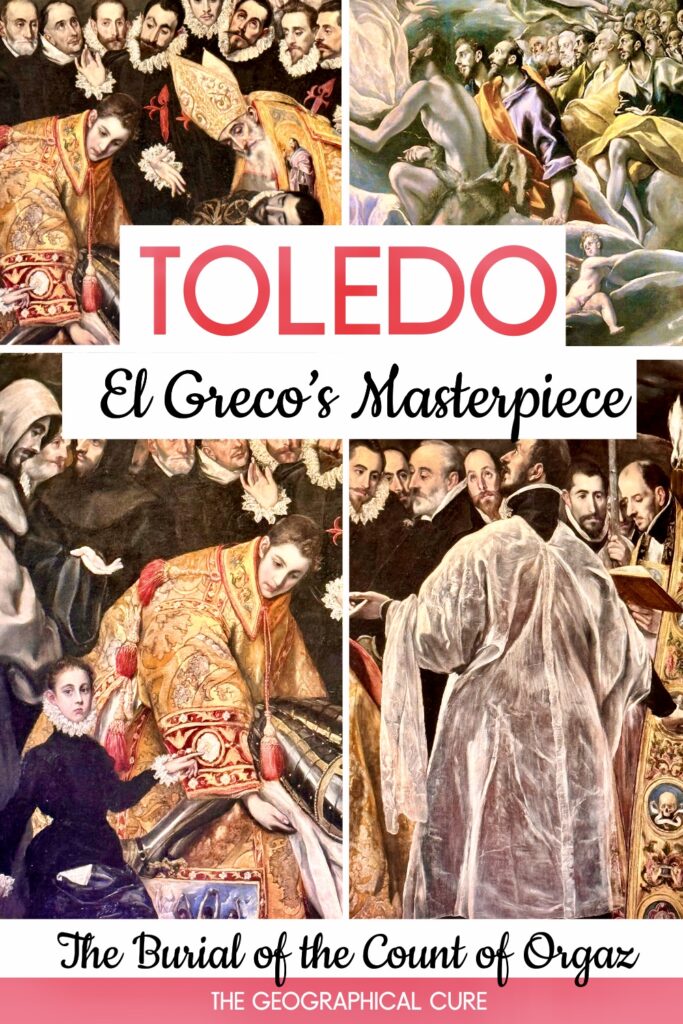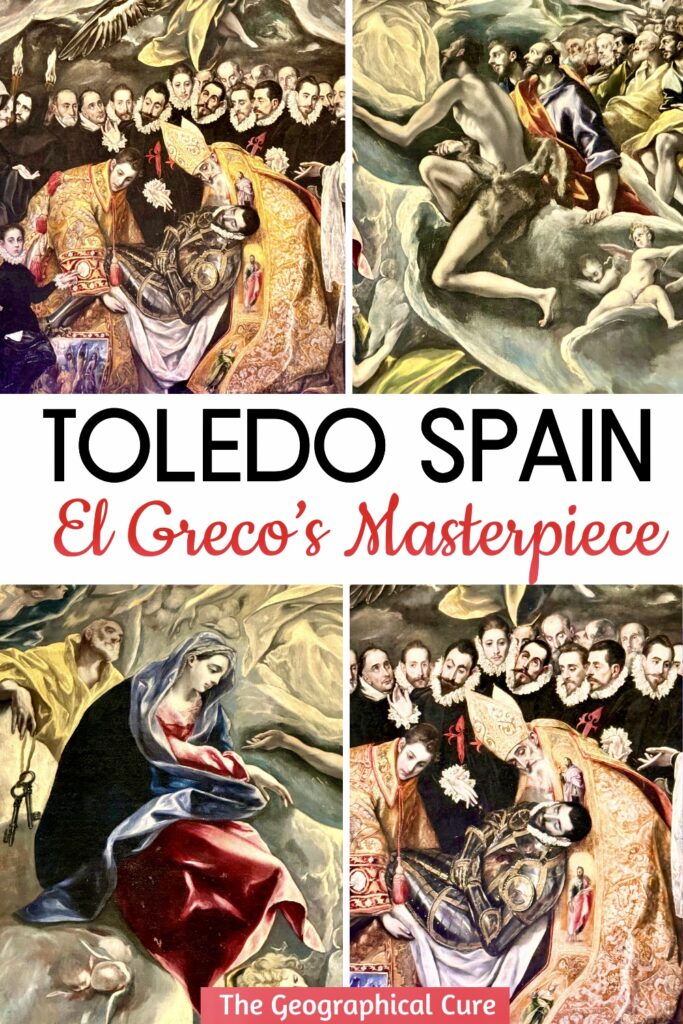You can’t go to Toledo and not stop into the Church of Santo Tomé!
The church itself isn’t very interesting. But it’s home to the masterpiece of Spain’s greatest Renaissance painter, El Greco — The Burial of Count Orgaz.
It’s a gorgeous painting created at the height of El Greco’s artistic powers. Art historians consider it to be in the top five masterpieces in Spanish art history.
El Greco created the painting specifically for the church and it depicts a miracle from Spanish lore.
It’s a rare masterpiece that is still in situ, in a place where you can have an in person encounter with great art. And take photos to boot!
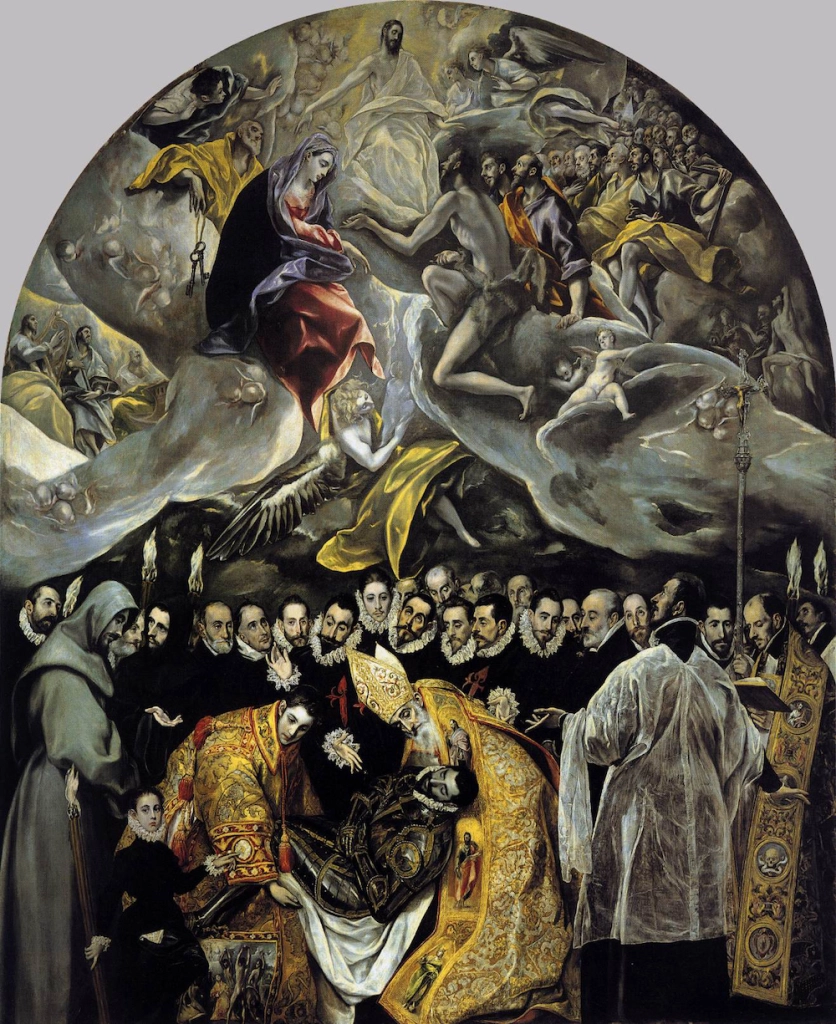
The painting illustrates a miracle at the funeral of a local luminary, Count Orgaz.
Two saints descend from heaven, St. Augustine and St. Stephen, to bury their favorite son. They did it to thank for him being a good Christian throughout his life, which is the moral of the painting. Be good!
The Burial of Count Orgaz In Santo Tomé
The Burial is a massive mystical painting, standing over 16 feet tall and 10 feet wide. The year is 1323 and the mayor of Toledo, Count Orgaz, dies and is about to be buried.
The painting is divided into two parts. It couples heaven and earth in a way that only El Greco could pull off.
The bottom part is a representation of earth and the count’s funeral, during which the miracle occurred. St. Augustine (right) and St. Stephen (left) descend from heaven, clad in elaborate cloaks.
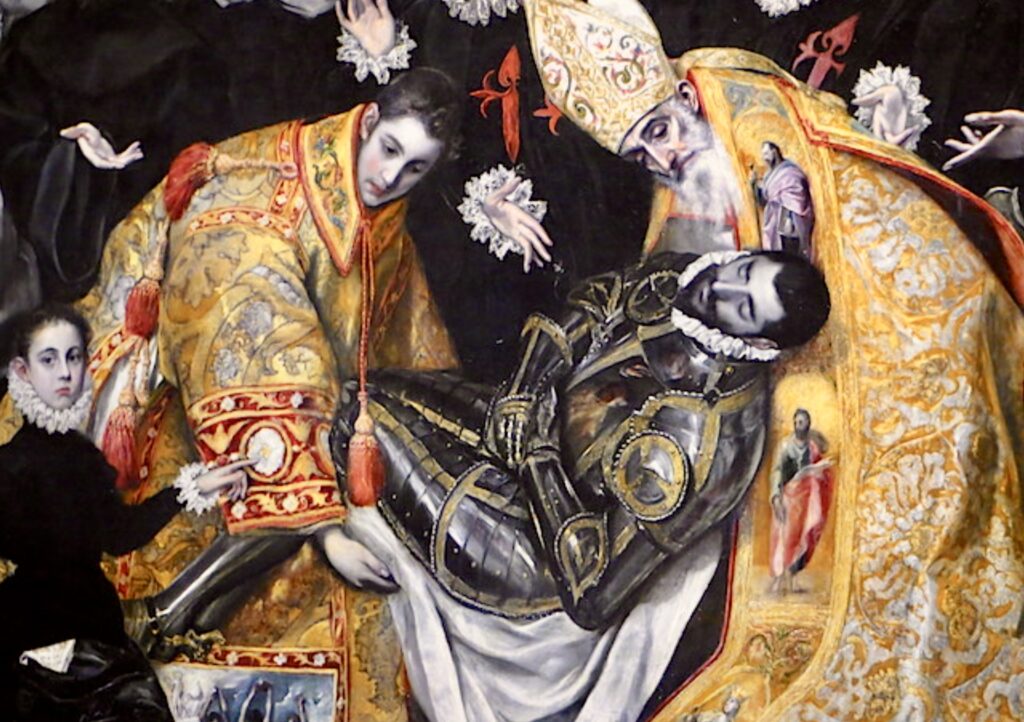
They hold the count’s arms and legs as if they were burying him themselves.
It’s a unique take on entombment scenes similar to those by Raphael or Titian. And, in fact, his actual tomb is at your feet in front of the painting.
At the top, an angel guides the count’s soul, depicted as a baby, toward judgment.
You see heaven and all those waiting for you if you lead a good life of devotion, piety, and good deeds.
The painting was intended to provide an “education” for the masses on how to punch your ticket to heaven.
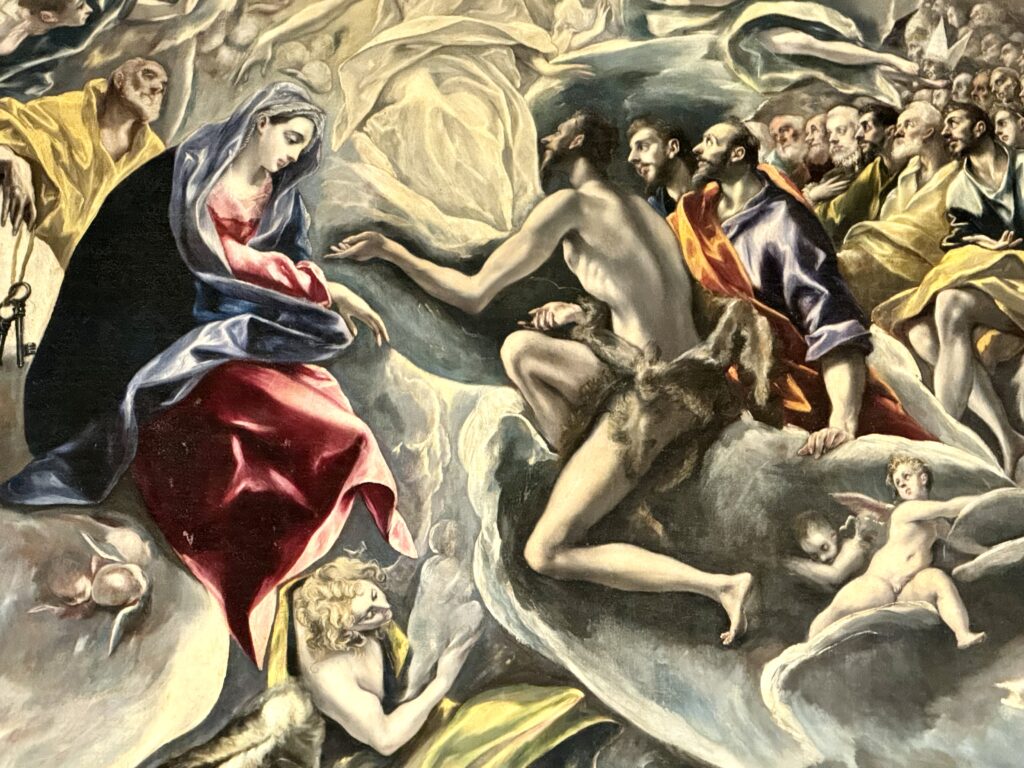
This was after the time of the Counter-Reformation, which advanced the idea of salvation through repentance even at death. By El Greco’s time, you were expected to be good during your life.
There are plenty of details, hidden meanings, and everything is set in the 16th century. The count, who died in the 14th century, is depicted in 16th century armor.
The child on the bottom left is El Greco’s 8 year old son, Jorge Manuel. He points toward the miracle with a didactic gesture. A scrap of paper in his pocket is the signature of El Greco in Greek.
The characters attending the funeral are not friends of the count. They’re friends of the painter from the nobility and high clergy (friars, the parish priest, etc.).
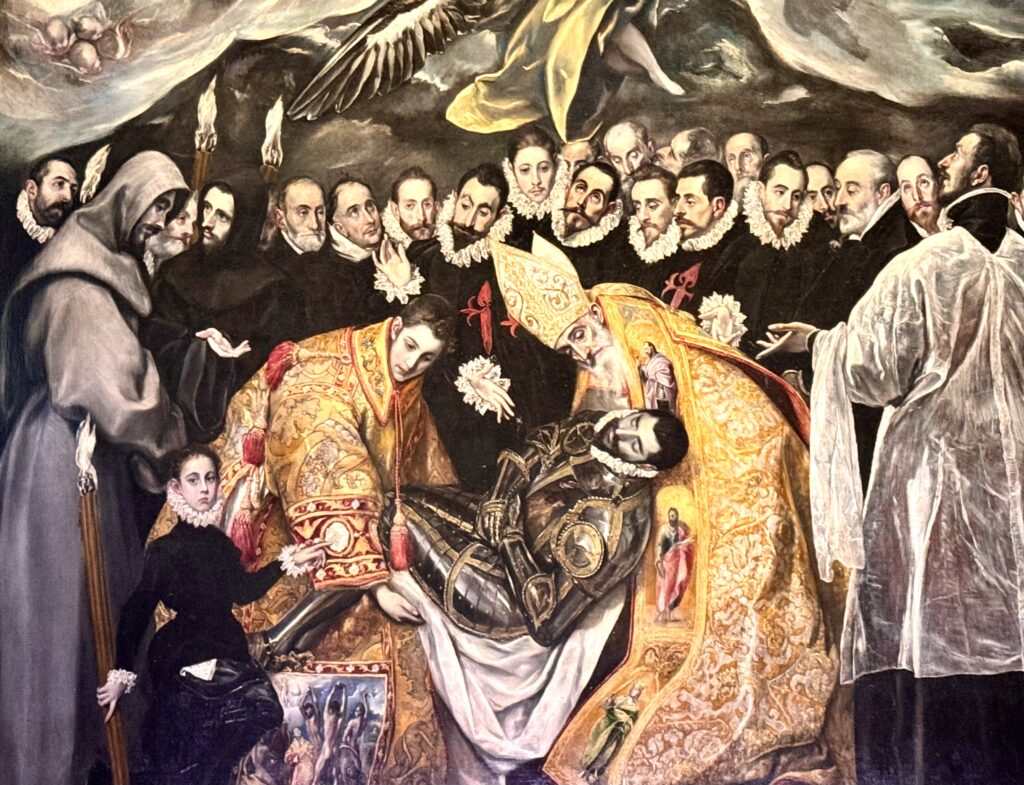
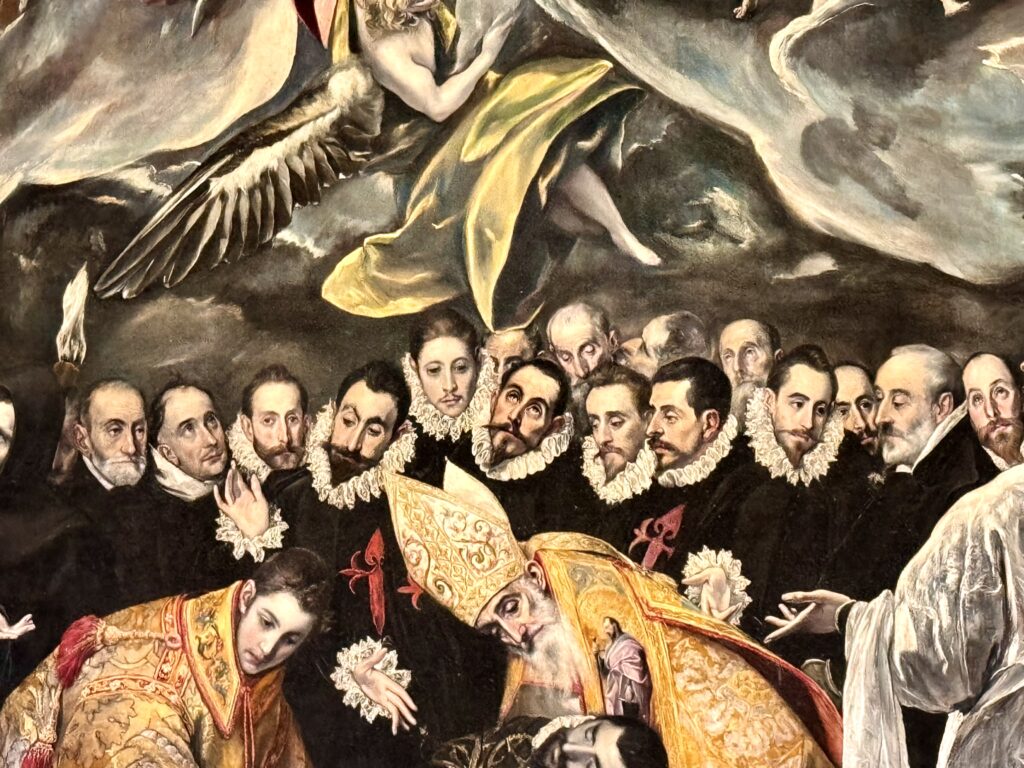
Heaven and earth are separated by a row of noble faces. Each is a distinct and beautiful portrait. They stretch across the canvas like a Byzantine frieze.
El Greco even paints a self-portrait. He’s shown above the head of St. Stephen.
The fact that he appears in the painting along with Toledo’s elite reflects his self esteem as a painter and intellectual, something he would have learned during his tenure in Italy.
Above the nobles is a series of billowing clouds and an “open heaven of glory.” (The latter was called for in El Greco’s contract.) The clouds create a central funnel or possibly a maternal womb.
God sends an angel to earth to save the count’s small spectral soul, which looks like an embryo, and take it to heaven. This detail may be a nod to El Greco’s Byzantine training.
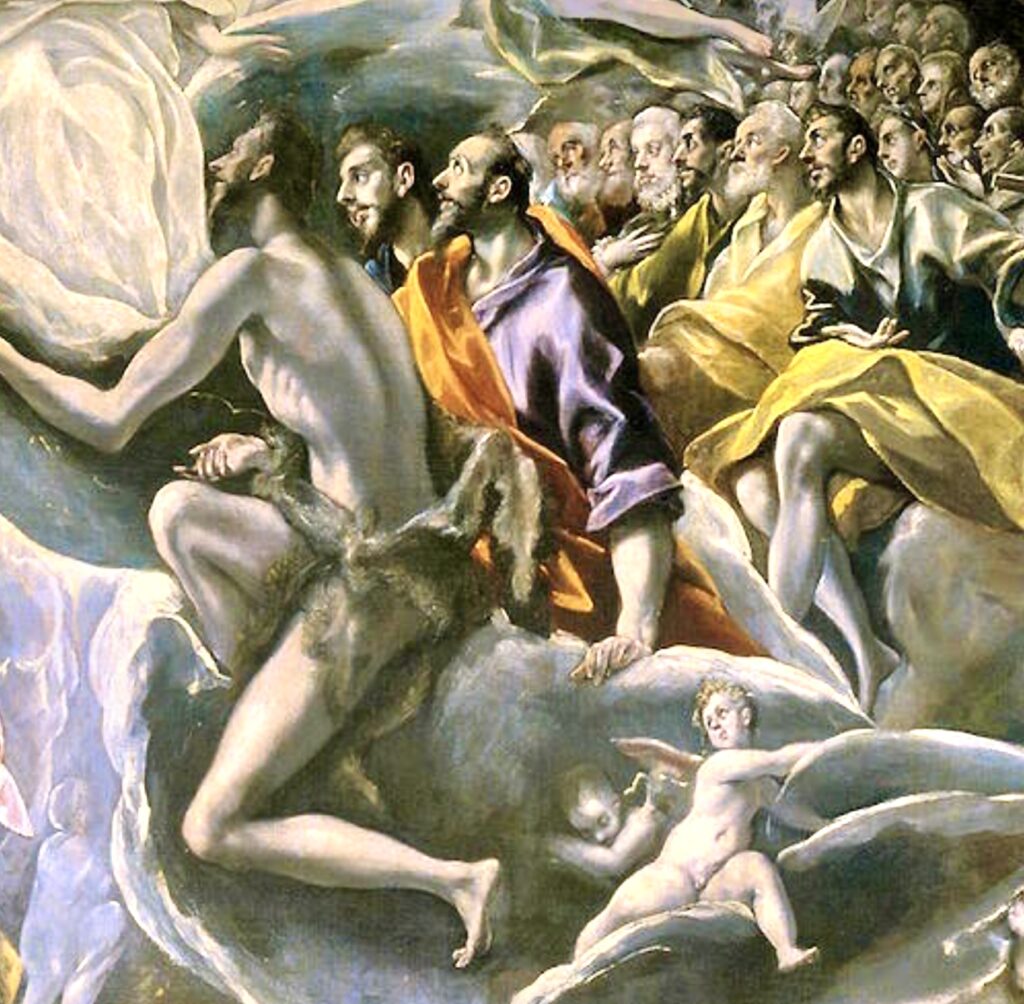
St. John the Baptist stands before Mary, speaking to Christ to mediate on behalf of the count’s soul. This underscores the idea that entry to heaven is not straightforward but requires judgment first.
St. Peter is also present, clutching the keys to paradise. He’s surrounded by Mary and other ethereal saints, who appear overwhelmed by ecstacy.
El Greco’s painting technique distinctively varies between the heavenly and earthly realms.
On earth, the scene is depicted with a naturalism and rich detail. The figures here are more proportionate, with normal, earth-toned colors, creating a realistic portrayal.
Still the time of day is ambiguous. You can’t even tell whether it’s day or night.
As you gaze shifts upwards, the transformation is evident. In heaven, the figures become stretched and elongated, a technique art historians describe as El Greco’s way of “dematerializing” his subjects to underscore their spiritual nature.
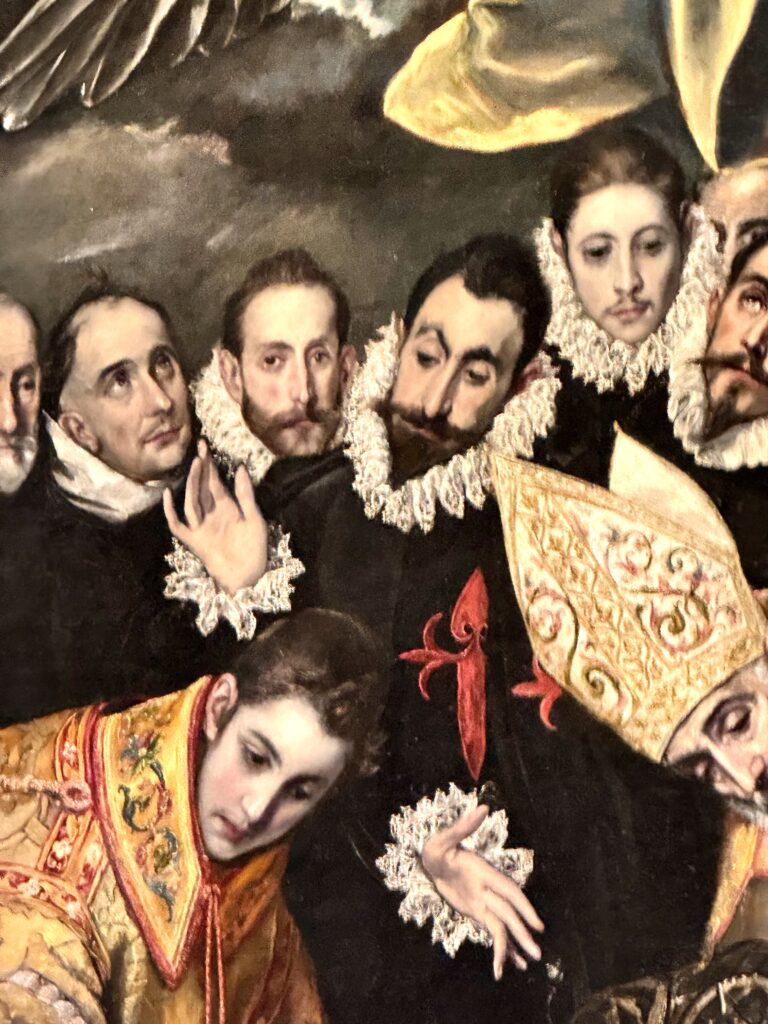
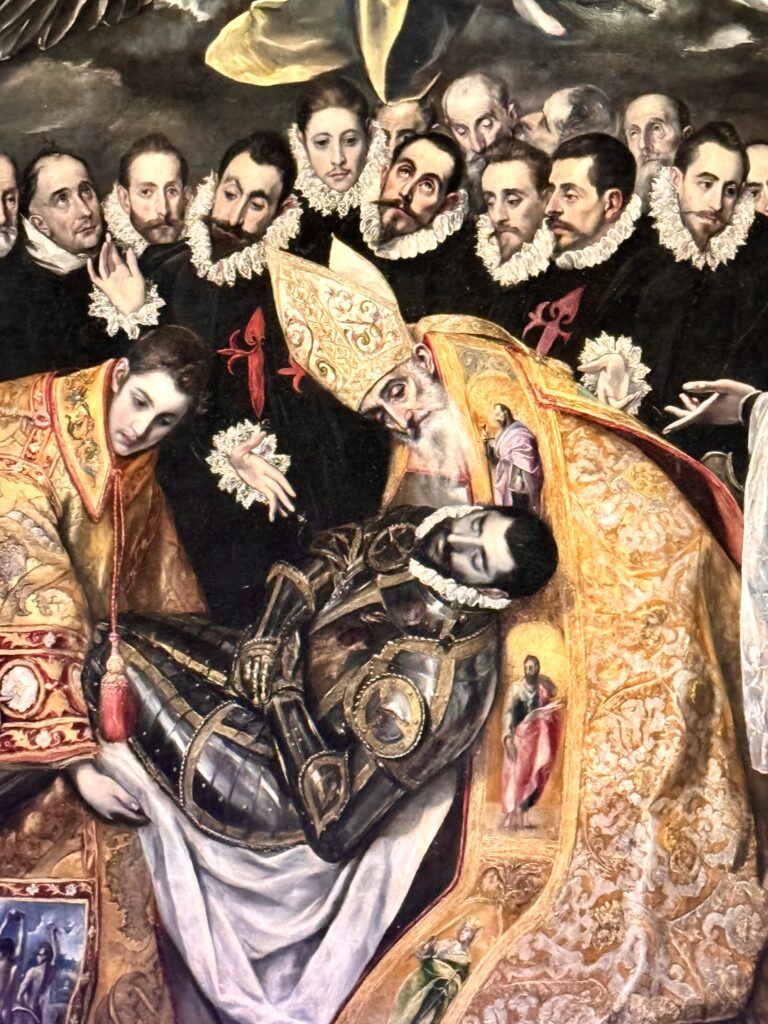
El Greco’s colors are vivid, almost florescent, and brushwork is looser. Look at the man wearing the unreal orange and purple robe!
There are very few details. Light is everywhere and the clouds arch upward. This is all intended to infuse the painting with an extreme unreality and religiosity.
This stark contrast enhances the division between the divine and the mortal.
Don’t miss the chance to stand in front of this artistic gem Toledo! I highly recommend a visit.
Practical Information For Santo Tomé
Address: Plaza del Conde 4. You enter the church through a side door that opens into the small funerary chapel with the painting.
Hours: Monday to Saturday from 10:00 am to 6:00 pm.
Tickets: 4 €
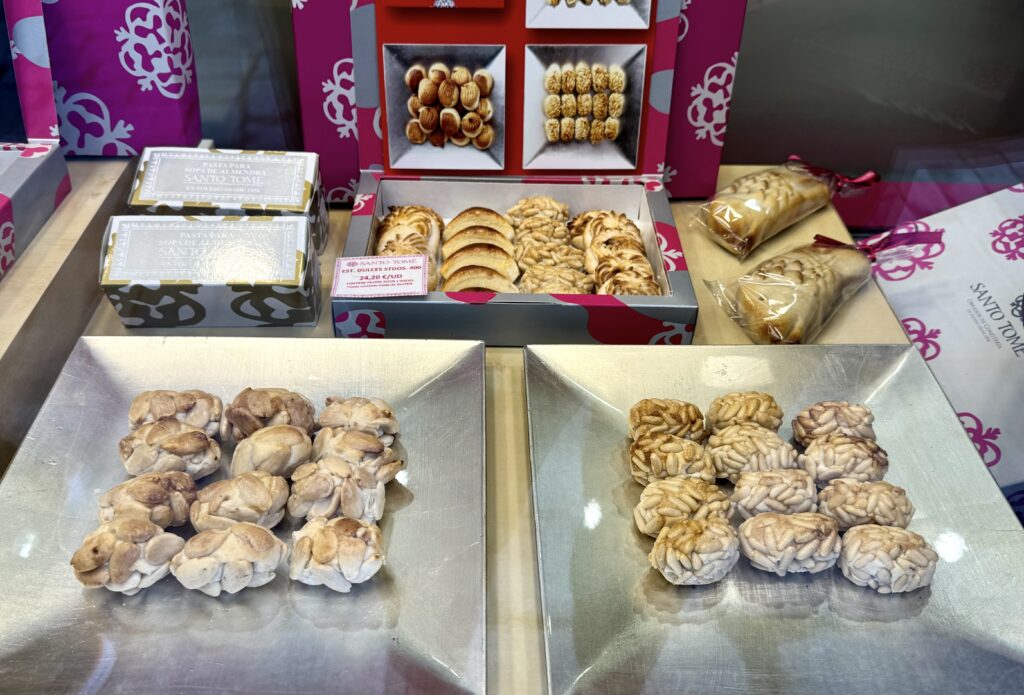
Pro Tips:
The ticket office faces the main square. You can expect a line, but it’s worth the wait.
Be sure to take a look at the church’s tower. It’s the most beautiful in the city, and built in a Mudejar style. It showcases all the usual decorations — horseshoe arches, multi-foil and interlacing arches, and ceramic columns.
Also, marzipan is the sweet speciality in Toledo. The Santo Tomé marzipan shop, the city’s best, is right near the church.
I hope you’ve enjoyed my guide to Santo Tomé and El Greco’s masterpiece. You may find these related travel guides useful:
- 2 days in Madrid itinerary
- guide to the Prado Museum
- 1 day in Toledo itinerary
- guide to Toledo Cathedral
- guide to the El Greco Museum
- guide to the Santa Cruz Museum
- El Greco’s art in Toledo
- guide to Santa Maria La Blanca
- guide to the Monastery de los Reyes
If you need a guide to Santo Tomé, pin it for later.

